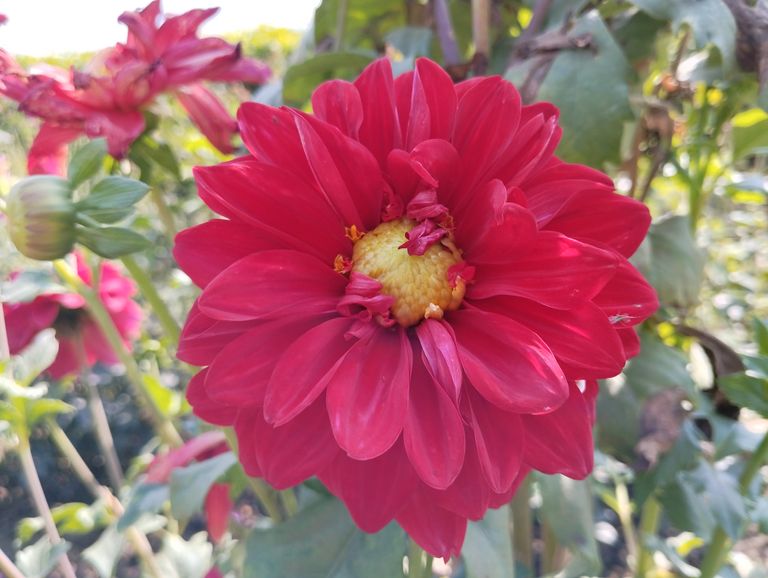
The Beauty of Dahlia Flowers.
Dahlia flowers are among the most captivating and diverse blooms in the botanical world. With their vibrant colors, intricate petal arrangements, and striking symmetry, dahlias have enchanted gardeners, florists, and flower enthusiasts for centuries. These stunning flowers symbolize elegance, creativity, and strength. In this blog, we will explore the beauty of dahlia flowers, their fascinating history, varieties, cultivation techniques, and their significance in different cultures.
A Brief History of Dahlia Flowers
Dahlias are native to Mexico and Central America, where they were cultivated by the Aztecs for both ornamental and medicinal purposes. The flower was named after the Swedish botanist Anders Dahl, who played a significant role in classifying and studying plants. In the late 18th century, dahlias were introduced to Europe, quickly gaining popularity due to their breathtaking beauty and ability to adapt to different climates. Today, dahlias are grown worldwide and are a favorite among gardeners and floral designers.
Varieties of Dahlias
One of the most fascinating aspects of dahlias is their incredible diversity. There are over 42 species and thousands of hybrids, each with unique colors, shapes, and sizes. Some of the most popular dahlia varieties include:
- Decorative Dahlias
These are the most well-known types of dahlias, featuring large, fully double blooms with broad, slightly curved petals. They come in various colors, from soft pastels to deep, rich hues.
- Cactus Dahlias
These dahlias have long, pointed petals that curl backward, giving them a spiky yet elegant appearance. Their dramatic shape adds a touch of sophistication to any garden or floral arrangement.
- Pompon and Ball Dahlias
These varieties have perfectly round, tightly packed petals, creating a charming and symmetrical look. They are smaller in size but make a big impact with their striking colors and shape.
- Collarette Dahlias
These unique dahlias have an outer row of large petals and an inner ring of smaller, frilly petals, resembling a collar. Their contrasting colors make them stand out beautifully.
- Anemone and Orchid Dahlias
Anemone dahlias have a central cluster of tubular petals surrounded by a ring of flat petals, while orchid dahlias have open, star-shaped blooms. Both types add texture and variety to flower gardens.
The Mesmerizing Colors of Dahlias
Dahlias are available in almost every color except true blue. Their vibrant shades symbolize different emotions and meanings:
Red Dahlias – Represent strength, power, and passion.
Pink Dahlias – Symbolize grace, kindness, and admiration.
Yellow and Orange Dahlias – Signify joy, positivity, and warmth.
White Dahlias – Represent purity, innocence, and new beginnings.
Purple and Lavender Dahlias – Denote royalty, elegance, and mystery.
Their diverse color palette makes them a favorite for floral arrangements, weddings, and garden displays.
Cultivating Dahlias: Growing and Caring Tips
Dahlias are relatively easy to grow, but they require proper care to thrive. Here are some essential tips for growing these stunning flowers:
- Choosing the Right Location
Dahlias thrive in well-drained soil and full sunlight. Choose a location that receives at least 6-8 hours of direct sunlight daily.
- Soil Preparation
They prefer slightly acidic to neutral soil (pH 6.5-7.0). Enrich the soil with compost or organic matter to promote healthy growth.
- Planting Dahlia Tubers
Plant dahlia tubers in the spring after the last frost. Space them about 18-24 inches apart and place them 4-6 inches deep in the soil, with the eye (growing point) facing upward.
- Watering
Dahlias need consistent moisture but should not be overwatered. Water deeply a few times a week, ensuring the soil remains moist but not soggy.
- Fertilization
Use a low-nitrogen fertilizer (such as 5-10-10) to encourage strong roots and abundant blooms. Avoid excessive nitrogen, as it promotes leafy growth instead of flowers.
- Staking and Support
Tall dahlia varieties may need staking to prevent their stems from bending or breaking. Use stakes or cages to support them as they grow.
- Deadheading and Pruning
Regularly remove faded blooms to encourage continuous flowering. Pinching the top growth early in the season helps produce bushier plants.
- Winter Care
In colder climates, dahlia tubers should be dug up after the first frost and stored in a cool, dry place for the winter. In warmer regions, they can remain in the ground with proper mulching.
Dahlias in Culture and Symbolism
Dahlias are not just admired for their beauty; they also hold deep symbolic meanings in different cultures:
In Victorian flower language, dahlias symbolize elegance, commitment, and everlasting love.
In Mexico, dahlias are the national flower, representing resilience and strength.
In Japan, they symbolize dignity and grace.
In weddings, dahlias are often used in bouquets as a symbol of devotion and a lifelong bond.
Dahlias in Floral Design and Art
Florists and artists adore dahlias for their dramatic appearance and versatility. They are often featured in bridal bouquets, centerpieces, and artistic floral arrangements. Their bold colors and intricate petal structures make them a favorite subject for paintings, photography, and even fashion design.
Conclusion: The Timeless Charm of Dahlias
Dahlias are a true marvel of nature, captivating people with their diverse forms, vibrant colors, and rich symbolism. Whether grown in gardens, used in floral displays, or admired in art, these flowers bring beauty and joy to those who appreciate them. Their ability to bloom from summer to fall makes them a long-lasting delight in any landscape.
If you are a flower lover or a gardening enthusiast, growing dahlias can be a rewarding experience. With proper care and attention, these enchanting flowers will fill your garden with a spectacular display of color and elegance, leaving you mesmerized season after season. Would you like to explore more about different flowers and their meanings? Let us know in the comments.
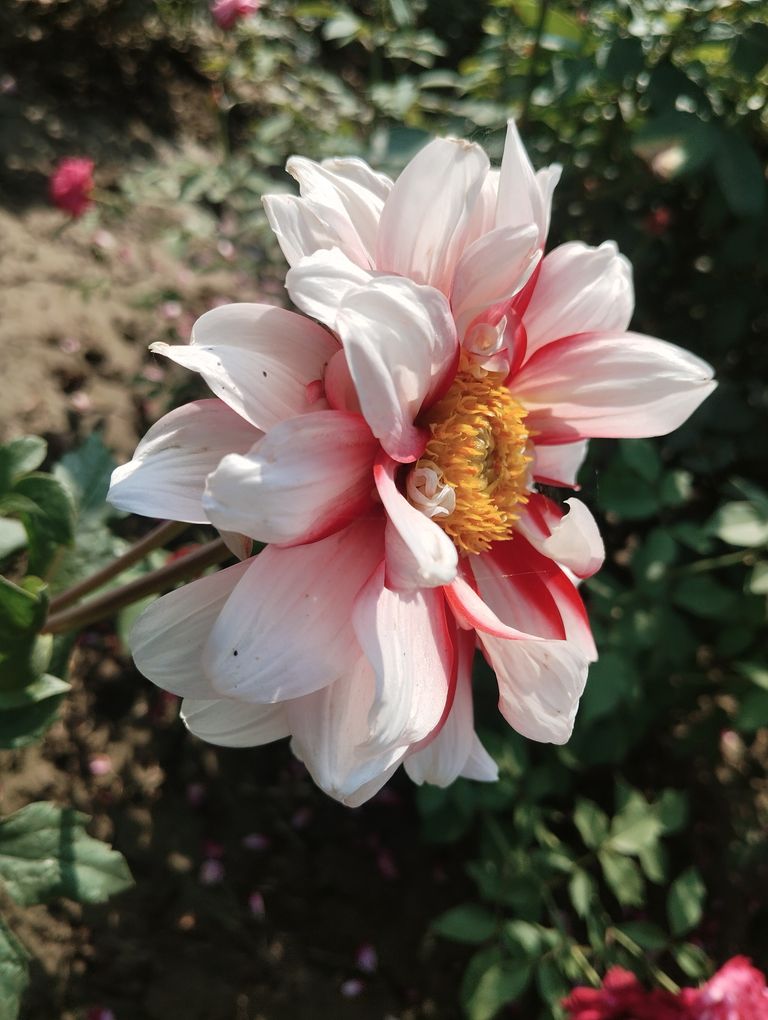
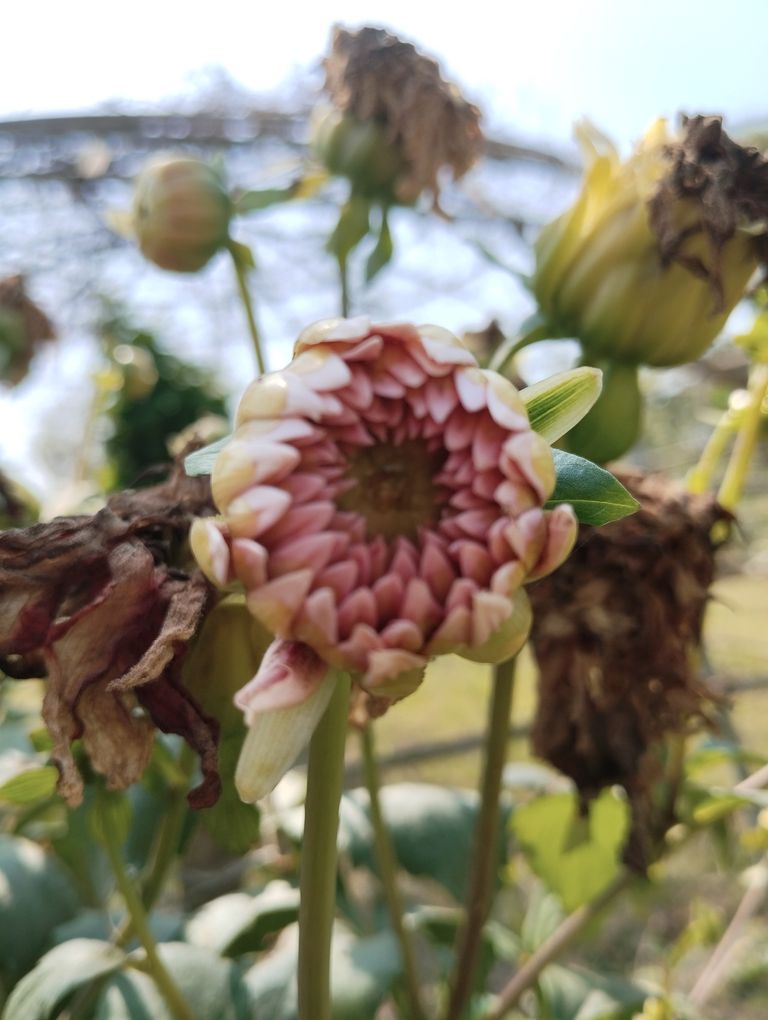
Dahlia Flower Cultivation: A Complete Guide
Dahlia flowers are among the most vibrant and diverse flowering plants, known for their striking colors and intricate petal structures. They are popular in gardens, floral arrangements, and even competitions. If you’re interested in growing dahlias, this guide will help you cultivate these beautiful blooms successfully.
- Understanding Dahlia Flowers
Dahlias belong to the Asteraceae family and are native to Mexico and Central America. They come in various sizes, from small pompons to dinner-plate-sized blooms. Their colors range from pure white to deep red, purple, yellow, and even multi-colored varieties.
Popular Dahlia Varieties
Decorative Dahlias – Large, showy flowers perfect for cutting.
Cactus Dahlias – Spiky, curled petals with dramatic appeal.
Pompon Dahlias – Small, globe-shaped blooms.
Dinner Plate Dahlias – Enormous flowers up to 12 inches in diameter.
Collarette Dahlias – Feature a ring of smaller petals inside larger ones.
- Climate and Soil Requirements
Ideal Climate for Dahlia Cultivation
Dahlias thrive in temperate to warm climates with full sun exposure. They prefer:
Temperatures between 15°C to 30°C.
A frost-free growing season, as frost can damage the tubers.
Best Soil for Dahlias
Well-drained, fertile soil with good organic matter.
A pH level between 6.0 to 7.0.
Light loamy or sandy soil is ideal.
Before planting, enrich the soil with compost or well-rotted manure for better growth.
- Propagation of Dahlias
Dahlias can be propagated using seeds, tubers, or cuttings.
a) Growing Dahlias from Tubers
- Choose healthy tubers with at least one visible "eye" (growing point).
- Plant tubers 4-6 inches deep in well-prepared soil.
- Space the tubers 12-18 inches apart to allow proper growth.
- Water lightly after planting and increase watering as shoots emerge.
b) Growing Dahlias from Cuttings
- Take 4-6 inch cuttings from a sprouting tuber.
- Dip the cut end in rooting hormone for better growth.
- Plant in a moist soil mix and keep in a warm, humid environment.
- After 2-3 weeks, once rooted, transplant to the garden.
c) Growing Dahlias from Seeds
- Sow seeds indoors 6-8 weeks before the last frost.
- Use a well-draining potting mix and keep at 18-22°C for germination.
- Transplant seedlings when they reach 4-6 inches in height.
- Planting and Care
Planting Dahlias in the Garden
Choose a sunny spot with at least 6-8 hours of direct sunlight.
Dig a hole deep enough to accommodate the tuber and roots.
Add organic compost or a balanced fertilizer for better flowering.
Cover lightly with soil and water thoroughly.
Watering
Keep the soil moist but not waterlogged.
Water deeply 2-3 times a week, especially during dry periods.
Avoid overhead watering to prevent fungal diseases.
Fertilization
Use a low-nitrogen fertilizer (such as 10-20-20) for better blooms.
Apply fertilizer once a month during the growing season.
Staking and Support
Tall dahlia varieties may require staking to support heavy blooms.
Insert bamboo stakes or metal rods at planting time to avoid root damage.
- Pest and Disease Management
Common Pests
Aphids – Suck sap from leaves and buds. Control with neem oil or insecticidal soap.
Slugs and Snails – Eat leaves and stems. Use organic slug bait or handpick at night.
Spider Mites – Cause yellowing and webbing on leaves. Spray with water or neem oil.
Common Diseases
Powdery Mildew – White fungal growth on leaves. Improve air circulation and use fungicide.
Botrytis Blight – Gray mold on flowers. Remove affected parts and apply fungicide.
Root Rot – Caused by overwatering. Ensure well-drained soil and avoid waterlogging.
- Harvesting and Storage
Cutting Dahlias for Bouquets
Harvest early in the morning or late in the evening.
Use a sharp knife to cut stems at an angle.
Place flowers immediately in lukewarm water to prolong freshness.
Storing Dahlia Tubers for Winter
- Dig up tubers after the first frost.
- Clean off excess soil and let them dry for a few days.
- Store in a cool, dry place (5-10°C) in peat moss or sawdust.
- Check periodically for rot and discard damaged tubers.
- Benefits of Growing Dahlias
Enhance garden beauty with vibrant blooms.
Attract pollinators like bees and butterflies.
Great for cut flowers and floral arrangements.
Easy to propagate, making them a cost-effective choice.
Conclusion
Dahlias are a rewarding flower to grow, offering stunning blooms with minimal maintenance. By following proper planting, watering, and care techniques, you can enjoy a flourishing dahlia garden. Whether for home gardening or commercial cultivation, these flowers add a touch of elegance and charm to any landscape. Are you ready to start your dahlia garden? Let us know your experience and tips in the comments below.
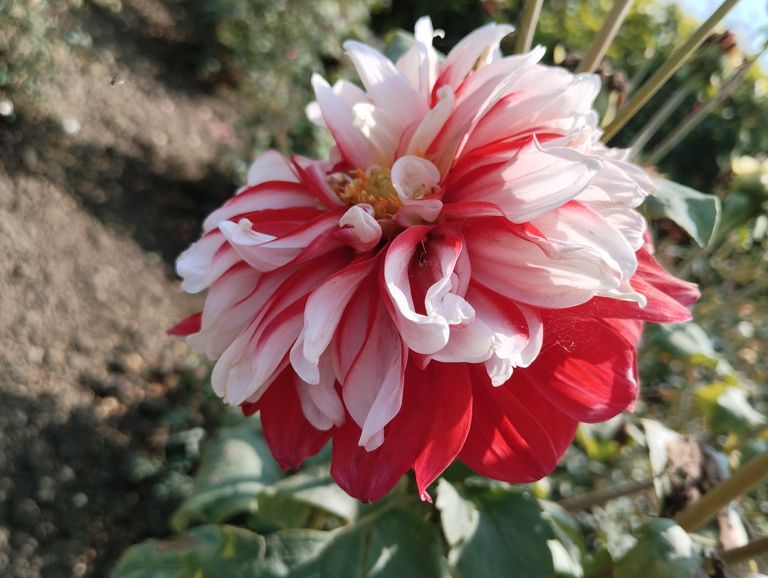
Health and Environmental Benefits of Dahlia Flowers
Dahlia flowers, with their vibrant colors and intricate petal arrangements, are not only a gardener’s delight but also have numerous benefits for health, beauty, and the environment. These stunning flowers belong to the Asteraceae family and are native to Mexico. Beyond their aesthetic appeal, dahlias offer medicinal properties, enhance biodiversity, and contribute to overall well-being. In this blog, we will explore the various advantages of dahlia flowers.
- Medicinal and Health Benefits of Dahlia Flowers
A. Natural Source of Prebiotics
Dahlia tubers contain inulin, a type of prebiotic fiber that promotes gut health. Inulin supports the growth of beneficial gut bacteria, improving digestion and reducing bloating. Consuming dahlia tubers in moderate amounts may help maintain a healthy digestive system.
B. Helps Control Blood Sugar Levels
The inulin found in dahlias is also beneficial for people with diabetes. Unlike regular starch, inulin does not spike blood sugar levels, making dahlia tubers a potential natural remedy for managing diabetes.
C. Supports Weight Loss
Since inulin promotes satiety and reduces calorie intake, dahlia tubers can be a great addition to a weight-loss diet. The fiber content keeps you full for longer, preventing overeating and unhealthy snacking.
D. Anti-Inflammatory and Antioxidant Properties
Dahlia petals contain antioxidants that help combat oxidative stress and inflammation in the body. These properties may aid in preventing chronic diseases such as arthritis, heart disease, and even cancer.
E. Boosts Skin Health
Dahlia extracts are rich in flavonoids and vitamins that can enhance skin health. Their anti-inflammatory properties help soothe irritation, reduce acne, and improve overall skin complexion. Some skincare products even incorporate dahlia extracts for their hydrating and brightening effects.
- Environmental Benefits of Dahlia Flowers
A. Supports Pollinators
Dahlias attract pollinators like bees, butterflies, and hummingbirds, playing a crucial role in maintaining biodiversity. The nectar-rich flowers provide essential nutrients to pollinators, contributing to a healthy ecosystem.
B. Improves Air Quality
Like all plants, dahlias help filter pollutants from the air and produce oxygen. Placing them in gardens or indoor spaces can enhance air quality and create a fresher environment.
C. Enhances Soil Health
Dahlia plants contribute organic matter to the soil, enriching its fertility. When the tubers and stems decompose, they improve soil structure and microbial activity.
D. Natural Pest Control
Some species of dahlias can repel certain pests, making them a great companion plant in gardens. They help reduce the need for chemical pesticides, promoting eco-friendly gardening.
- Aesthetic and Psychological Benefits
A. Enhances Mood and Reduces Stress
Flowers have a positive psychological impact, and dahlias are no exception. Their vibrant colors and symmetrical petals are known to uplift moods, reduce stress, and create a sense of tranquility.
B. Perfect for Home Decoration
Dahlias add a stunning visual appeal to homes, offices, and gardens. Their diverse color palette, ranging from deep reds and purples to soft pastels, makes them a popular choice for floral arrangements.
C. Used in Aromatherapy
Though not widely known, some dahlia varieties are used in aromatherapy for their subtle fragrance and calming effects. The presence of flowers in living spaces can enhance relaxation and promote emotional well-being.
- Culinary Uses of Dahlia Flowers
A. Edible Petals and Tubers
Dahlia petals are edible and can be used to garnish salads, desserts, and beverages. Their slightly sweet and peppery flavor adds a unique taste to culinary creations.
B. Dahlia Tea for Health Benefits
Some cultures prepare herbal tea using dahlia petals and tubers, believing it helps with digestion, immunity, and overall wellness.
Conclusion
Dahlia flowers are not just ornamental beauties; they offer a range of health, environmental, and aesthetic benefits. From supporting gut health and boosting skin care to improving biodiversity and enhancing mental well-being, dahlias have much to offer. Whether you grow them in your garden or use their extracts in skincare and food, incorporating dahlias into your lifestyle can bring numerous advantages. Would you like to explore how to grow and care for dahlias at home? Let us know in the comments.
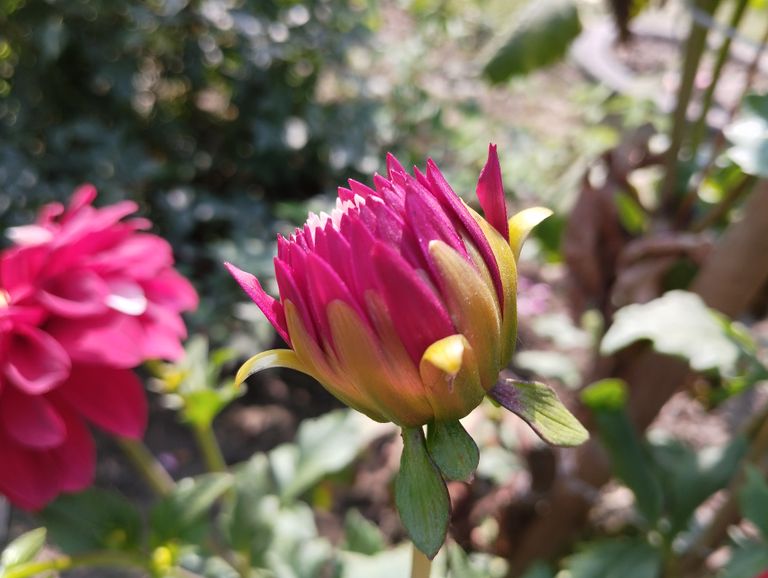
Health and Environmental Benefits of Dahlia Flowers
Dahlia flowers, with their vibrant colors and intricate petal arrangements, are not only a gardener’s delight but also have numerous benefits for health, beauty, and the environment. These stunning flowers belong to the Asteraceae family and are native to Mexico. Beyond their aesthetic appeal, dahlias offer medicinal properties, enhance biodiversity, and contribute to overall well-being. In this blog, we will explore the various advantages of dahlia flowers.
- Medicinal and Health Benefits of Dahlia Flowers
A. Natural Source of Prebiotics
Dahlia tubers contain inulin, a type of prebiotic fiber that promotes gut health. Inulin supports the growth of beneficial gut bacteria, improving digestion and reducing bloating. Consuming dahlia tubers in moderate amounts may help maintain a healthy digestive system.
B. Helps Control Blood Sugar Levels
The inulin found in dahlias is also beneficial for people with diabetes. Unlike regular starch, inulin does not spike blood sugar levels, making dahlia tubers a potential natural remedy for managing diabetes.
C. Supports Weight Loss
Since inulin promotes satiety and reduces calorie intake, dahlia tubers can be a great addition to a weight-loss diet. The fiber content keeps you full for longer, preventing overeating and unhealthy snacking.
D. Anti-Inflammatory and Antioxidant Properties
Dahlia petals contain antioxidants that help combat oxidative stress and inflammation in the body. These properties may aid in preventing chronic diseases such as arthritis, heart disease, and even cancer.
E. Boosts Skin Health
Dahlia extracts are rich in flavonoids and vitamins that can enhance skin health. Their anti-inflammatory properties help soothe irritation, reduce acne, and improve overall skin complexion. Some skincare products even incorporate dahlia extracts for their hydrating and brightening effects.
- Environmental Benefits of Dahlia Flowers
A. Supports Pollinators
Dahlias attract pollinators like bees, butterflies, and hummingbirds, playing a crucial role in maintaining biodiversity. The nectar-rich flowers provide essential nutrients to pollinators, contributing to a healthy ecosystem.
B. Improves Air Quality
Like all plants, dahlias help filter pollutants from the air and produce oxygen. Placing them in gardens or indoor spaces can enhance air quality and create a fresher environment.